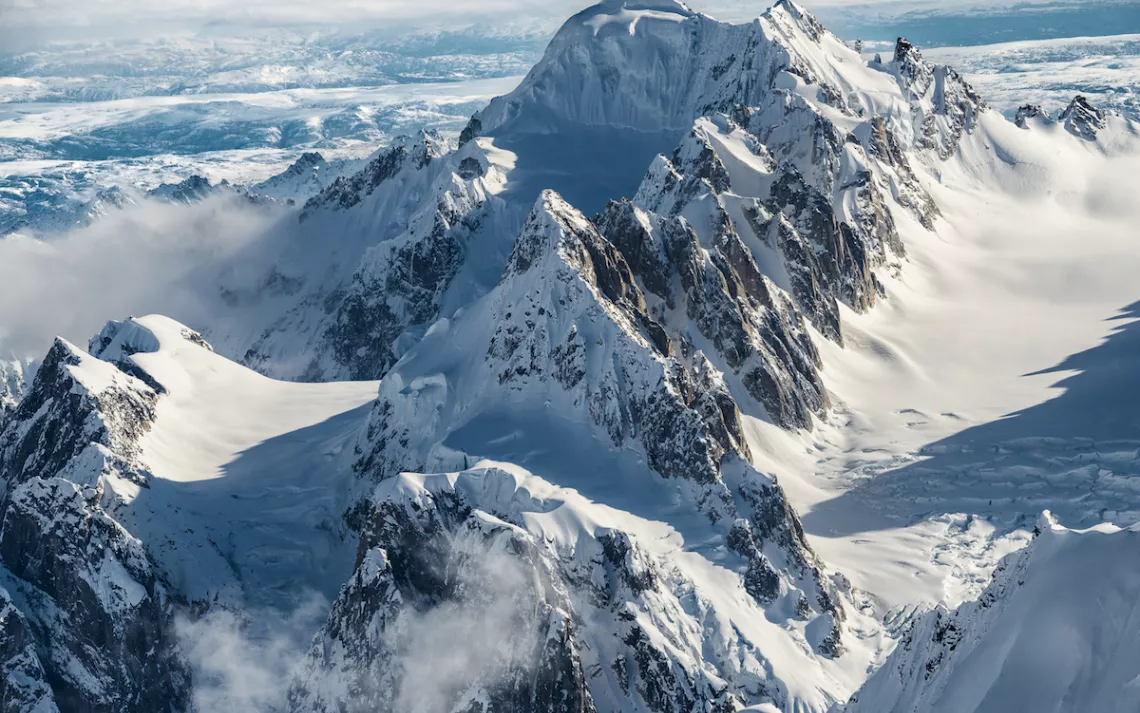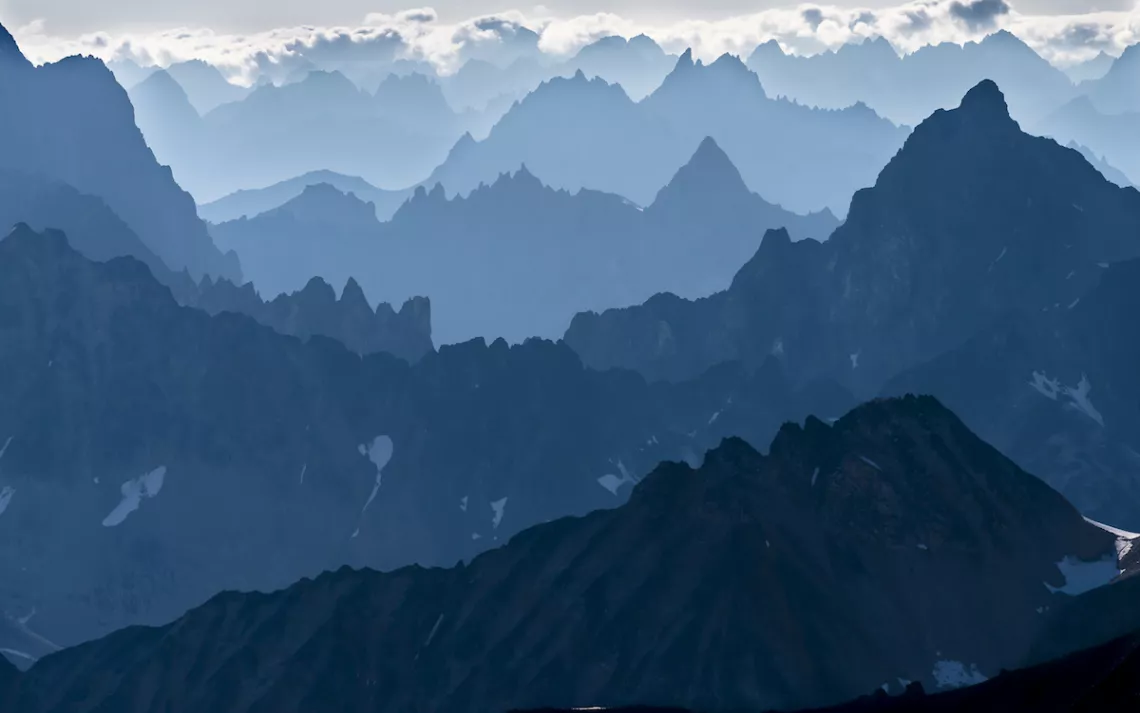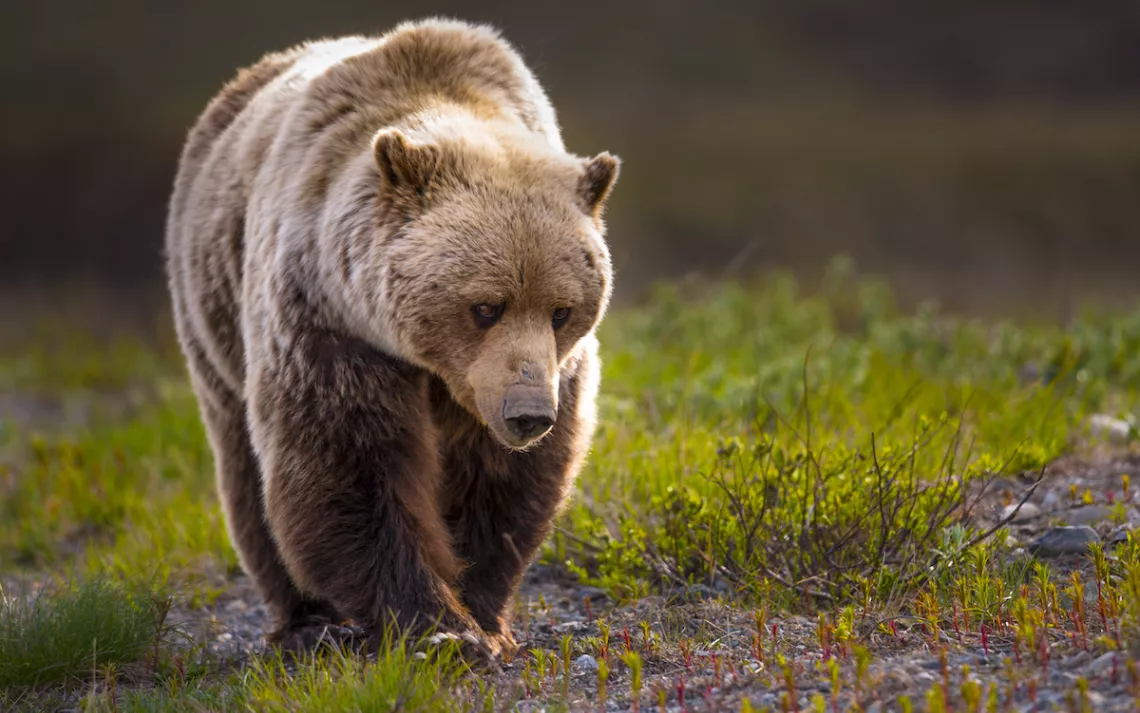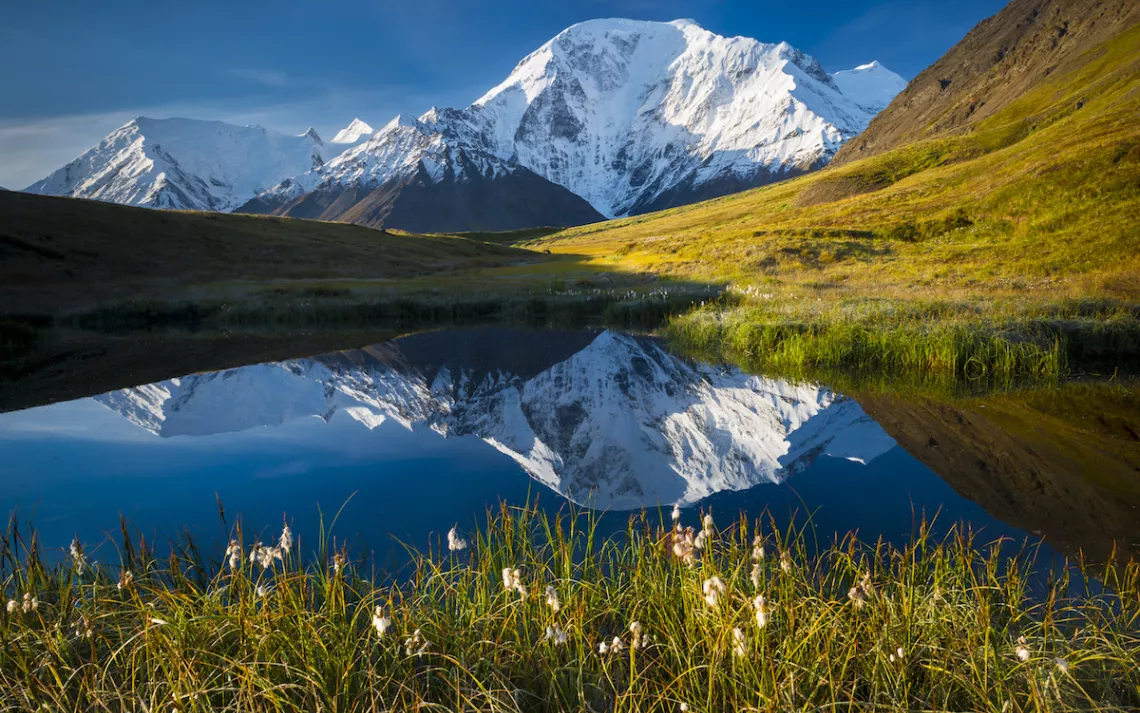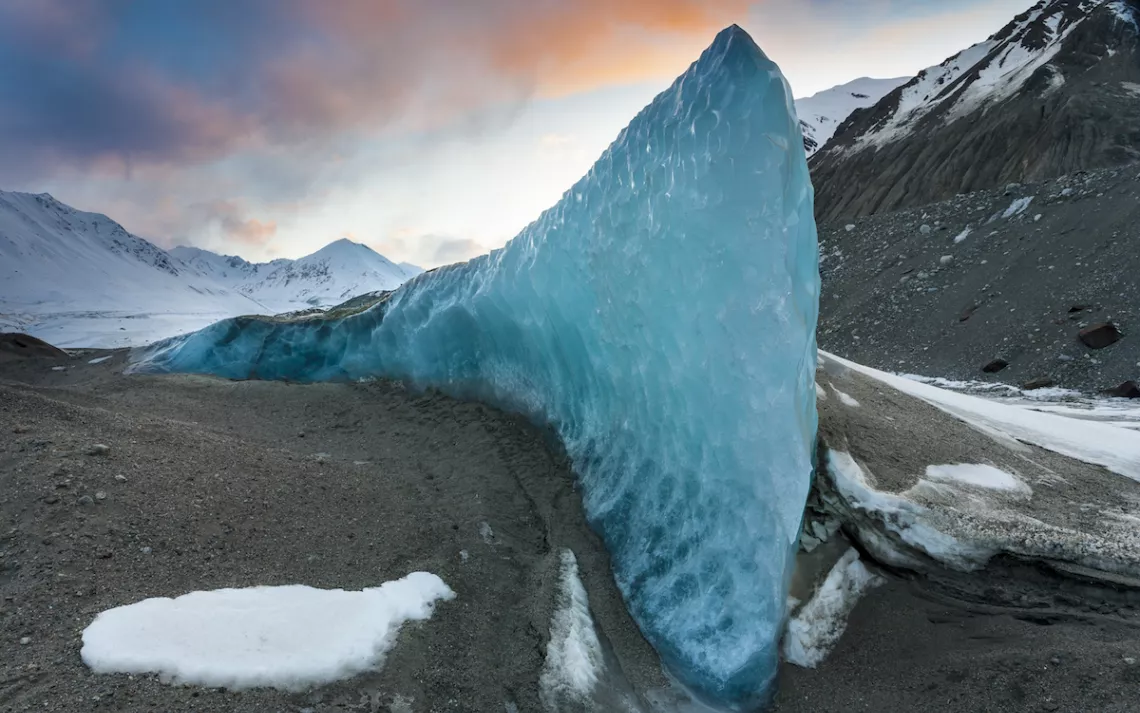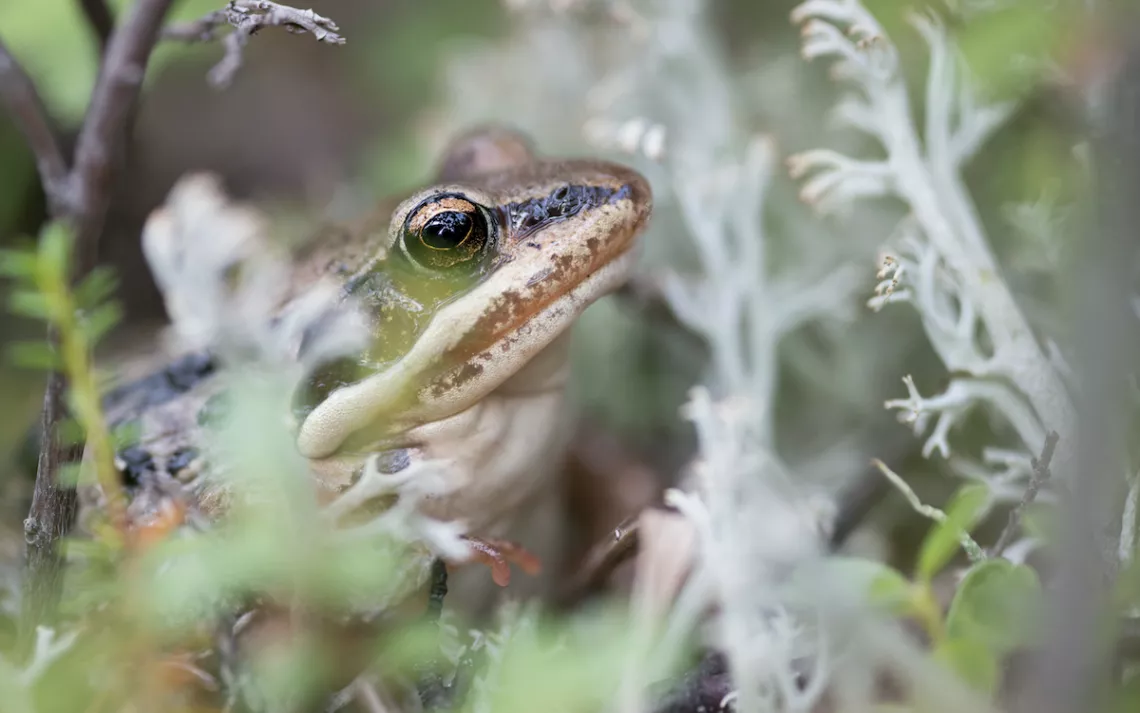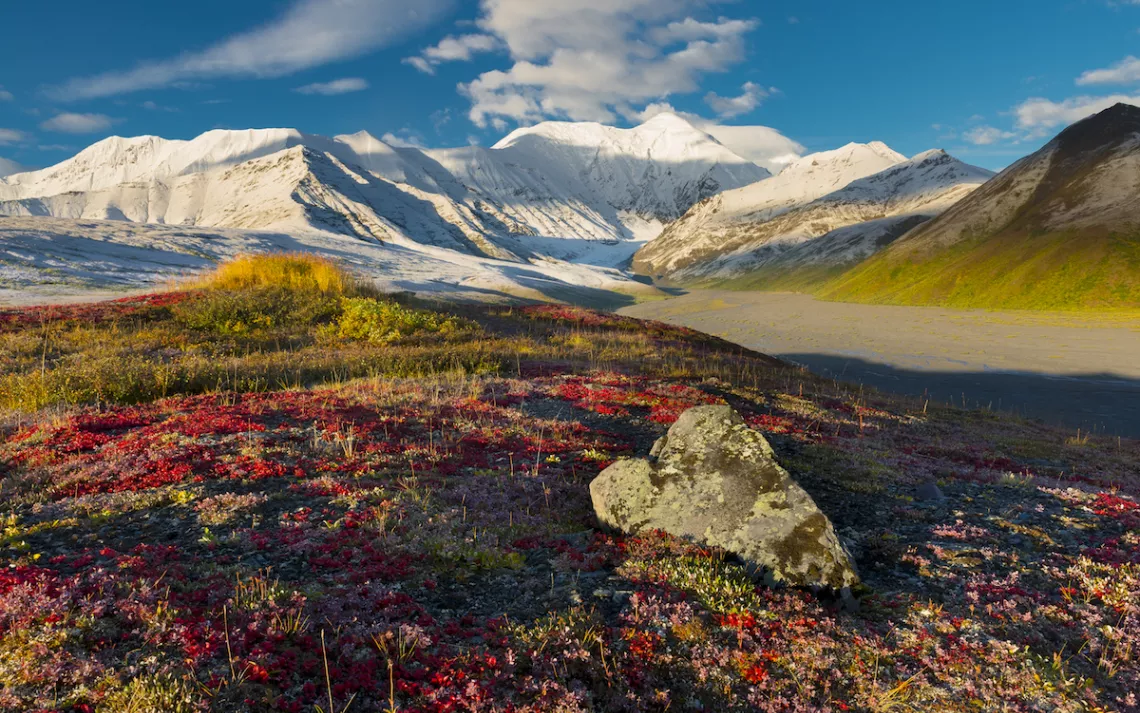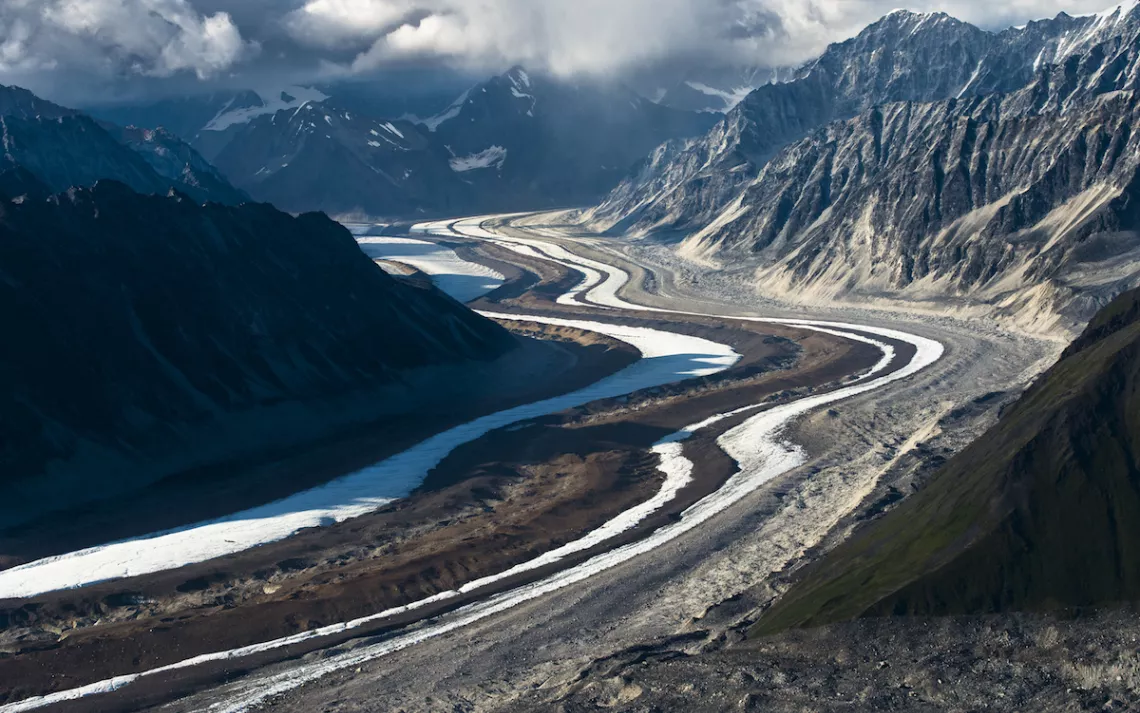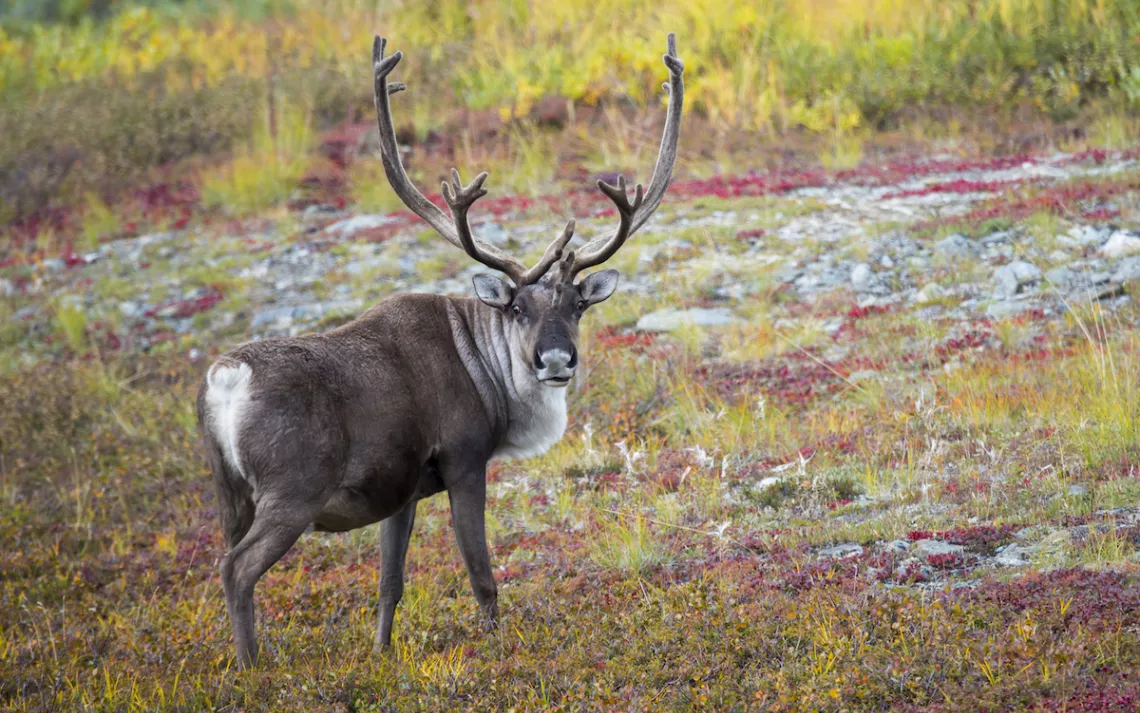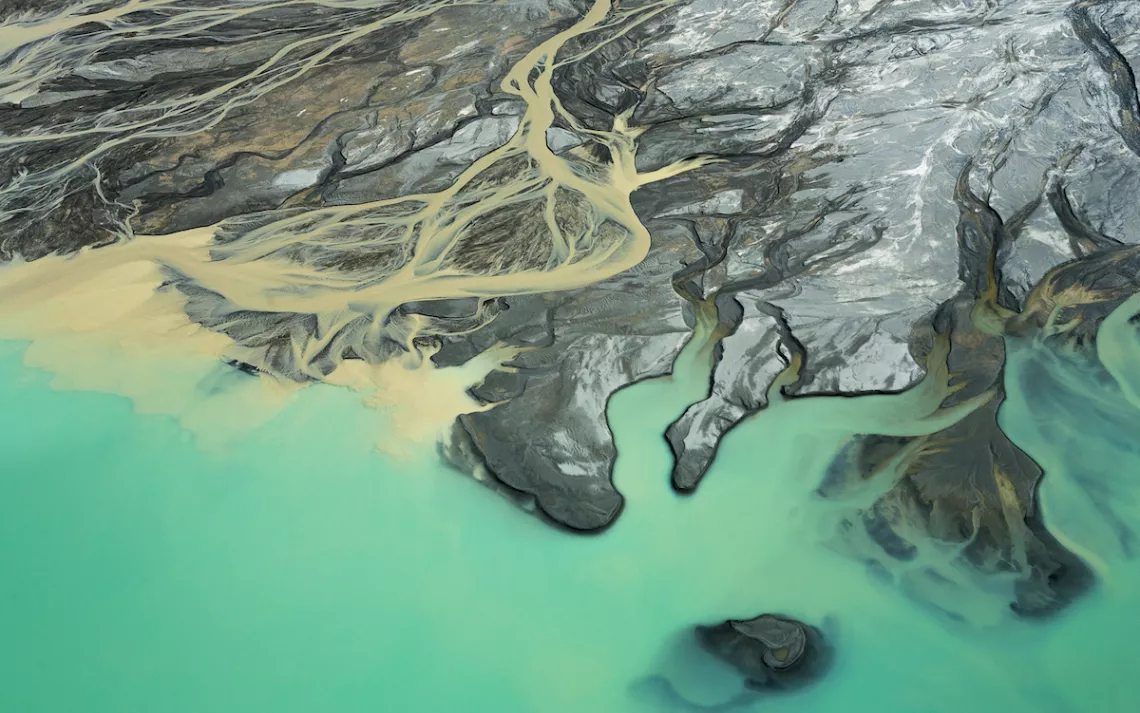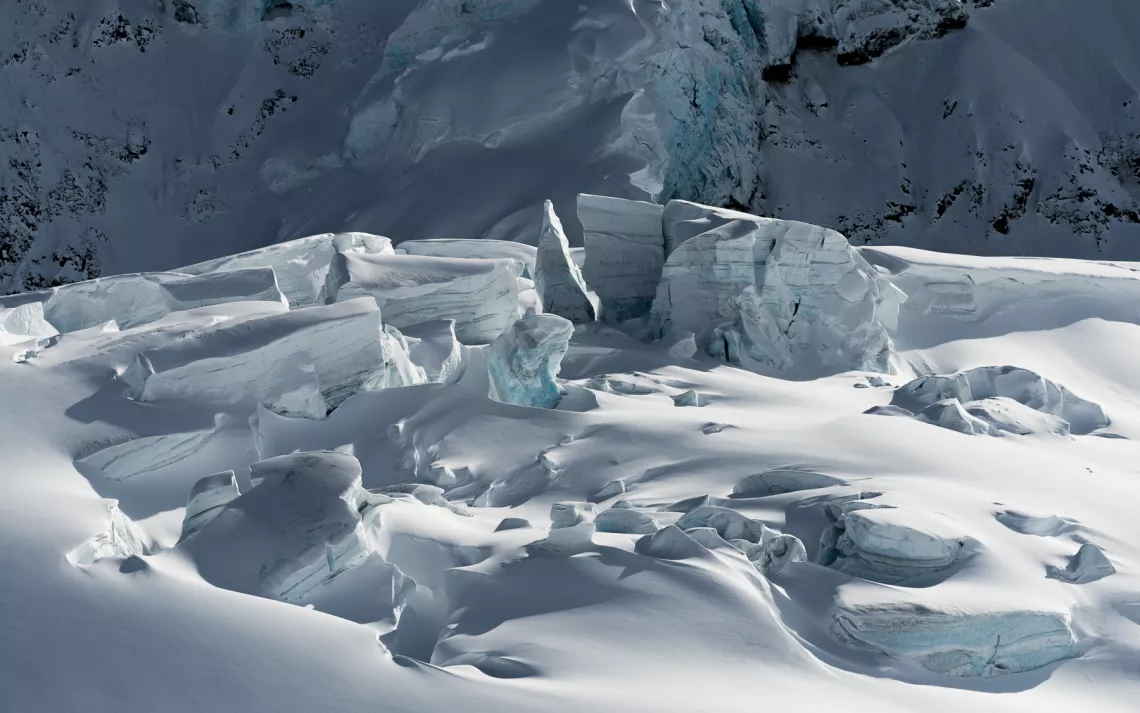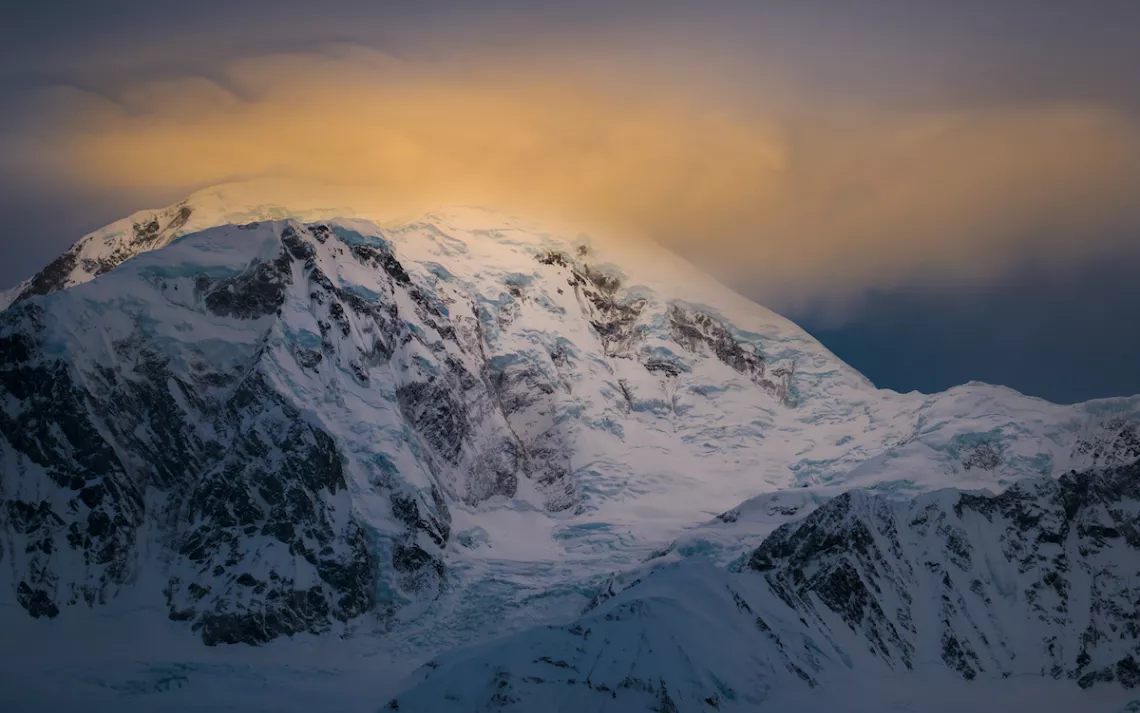Where the Trails Were Only Made by Creatures
Photographer Carl Battreall journeys through the wild sublimity of the Alaska Range
Images excerpted from Alaska Range: Exploring the Last Great Wild by Carl Battreall (Mountaineers Books, a non-profit publisher of award-winning books on outdoor recreation, travel, and adventure; October 2016). All photos by Carl Battreall.
Tucked within the steep walls and ridgelines of the Alaska Range, whole ecologies remain unspoiled from human intervention. Here, a vast landscape of tundra, arcing mountaintops, and crenelated glaciers extend for hundreds of miles, teeming with wildlife such as caribou, bears, and the occasional wolverine, and thriving with flora in bogs and low-elevation woodlands.
Carl Battreall captures this epic terrain with extraordinary precision in Alaska Range: Exploring the Last Great Wild (Mountaineers Books, October 2016; foreword by Art Davidson). An experienced mountaineer and wildlife photographer, Battreall has trekked across more than 200 glaciers and led dozens of trips into Alaska’s backcountry. The pictures in this collection span a period of eight years, during which he hiked, skied, and flew over some of the most unexplored wild places of the range, including remote areas of Denali National Park and its contiguous preserves. The cathedrals of ice, billowing grasslands, and mountain peaks filtered in diaphanous light come alive on the page thanks to Battreall’s dazzling photography and a series of fascinating essays with which his work is paired, penned by the likes of legendary explorer Roman Dial ("String of Jewels"), geologist Jeff Benowitz ("The Conception of the Mountain"), and wild plant expert Verna Pratt ("Reflections on Flora").
The concept for the project came to Battreall when he and his fiancé flew out to the Ruth Gorge in the winter of 2003 to get married. “After we spent 10 days out there exploring, I started looking at maps and thought, 'We all know about Denali, but what about the rest of the Alaska Range?'" Battreall said in an interview. “The more I pored over the maps, the more I realized that there was a lot of country out there that I had never seen photographed. I wanted to go into those areas where no one had been, that weren’t protected by national parks.”
Easier said than done: In parts of this 600-mile-long geologic wonder, jagged ridges, icy glaciers, and rushing rivers and streams break up a maze of cutting peaks, narrow valleys, and bedrock. It took Battreall and his support team about six trips a year to cover the more remote, rarely photographed corners of the region—such as the Revelation Mountains, the Deborah-Hayes Range, and a series of unnamed peaks known locally as the Hidden Mountains—with at least two of the trips canceled each year because of weather or injury (in one outing to the Neacola Mountains, Battreall nearly drowned while crossing a river). The group typically waited for the winter months to improve their chances, when it’s easier to cross the rivers, which can turn into swamplands during the spring thaw. They could also cover a lot more ground on skis than on foot. “We tried skiing in from the roads initially, but when you get into the southern side of the Alaska Range, on the south side of Denali National Park between Lake Clark and Denali, that area is only accessible by plane,” he says. “In a lot of areas, you can’t even land. So we had to hike to the places we wanted to photograph.”
Battreall documented everything from the soaring tips of Mount Johnson, in expansive vista shots against sheer blue horizons, to the filigreed streaks of granite along the Kichatna Mountains, which, at over 40 million years old, account for some of the oldest geologic patterns in the range. “Eldridge Glacier is an area in Denali that not a lot of people go to," Batreall says. "The first trip we took there was a complete whiteout, and we weren’t able to get access. So in a last-ditch effort to photograph that area, I went with a friend and we flew around it and photographed those peaks.”
It can be difficult to determine where exactly Battreall is situated when he takes these incredible photographs. In one shot, of the north face side of the Wisdom Tooth, he seems to be soaring way up in the sky; in another, he could just as well be hanging off one of the zigzagging azure arcs of the Hidden Mountains. That’s just the way he likes it: Batreall prefers to keep his audience guessing. “I don’t like the high-up, looking-down aerials,” he says, “but I’m also not a big climber. To take the effort to climb a mountain often sucks up more photo time than to just explore at the lower and middle level and photograph them. A lot of people think I’m a big mountaineer. I’m an explorer maybe but not a climber. I don’t hunt down peaks for their summits.”
Battreall uses a telephoto lens and a fast shutter speed for his bigger vista shots—typically a 70-200mm lens for aerials and mountain photography (he prefers the same for ground shots as well). About 60 percent of the photos in Alaska Range were taken with that lens. It allows him to pull farther back from the peak and not get so tight that he has to shoot straight at the mountain. Also easier said than done, considering that the book's aerial shots were taken in a plane at about 3,000 or 4,000 feet with Battreall's camera pointed through an open window, often with the summit above him, so that he can photograph the mountains at eye level. “You have to shoot with the window open,” he explains. “There’s so much glare, and a lot of times on bush planes, the windows are scratched up, so having one that opens is essential to a really sharp photograph.” He says it’s key to not let the lens stick out the window, because the vibration can affect the shot. “Also, you can’t touch any of the plane, because it’s rattling and will shake you and your camera along with it.”
While Battreal welcomes the challenge of an expansive, high-elevation photo, he is just as eager to get on the ground and up close with wildlife and their habitats. “Aerial photography I like, but I would 100 percent prefer to be on the ground,” he says. “As I started working with mountaineers, we realized that to do this right, we would have to tell the whole story—everything from insects to the big mountains.”
Case in point: an incredibly intimate photo of a wood frog that hopped into his path while he was hiking over Wood Lake. The shot is so tight that the amphibian’s stippled, oleaginous nose barely pops out of the surrounding leaves and branches of lichen. “I got on my hands and knees and crawled around with it until I could get him to stay still enough to take a close shot of him," Battreall says. "People don’t often expect a frog to be out there in the tundra, so I was glad to get a shot of one. It was pretty cool.”
Battreall takes care to photograph animals in the wild without disturbing them. He doesn’t carry big telephoto lenses when he’s on foot, preferring to capture the wildlife in their environment. He only takes either wide-angle lenses or his 70-200. “Instead of these really tight headshots that are so common these days with wildlife photography, I try to incorporate them more into the scenery,” he says.
When he does use telephoto lenses, it’s often for safety reasons, and more often than not, bears are involved—such as a large bear he photographed in Denali with a big lens close to midnight. “When I’m on backcountry trips, I do everything I can to not have any interaction with bears except at a far distance, especially when it comes to interior bears," he says. "Coastal bears are usually fat and happy and sassy and tend to ignore photographers. But interior bears are a different beast altogether. They are significantly harder to predict. Oftentimes they’re hungry and can be a lot nosier, so I do whatever I can to avoid them.”
Battreall’s multiple trips documenting these remote wild places reinforced his sense that even natural wonders as seemingly invulnerable as the Alaska Range must be protected. The perception that nature is too big to fail, that its habitats and ecosystems will always endure regardless of the actions we take or the manner in which we take them, is one of the great follies of humankind. It is a truth that was never far from Battreall’s thoughts.
“We humans don’t seem to ever learn,” he says. “We assume that there will always be these wild places. They said the same thing about the West. These places that are tucked away and aren’t parks, this is kind of our last chance to see them, because they are becoming such a rarity around the world.
“There’s a part of Denali National Park about 90 miles from Wonder Lake that’s pretty much inaccessible, because you’re not allowed to fly there,” he says. “I’ve always wanted to go there but never made it. I only know of one person to successfully make it through: Roman Dial. He told me that it was the most perfect place he’d ever been. He said in that place, the trails were only made by creatures. I’m glad I’ll never be able to go there. Just the idea that there are these wild places where no human impacts are possible, and that those places just exist, really matters in this world.”
 The Magazine of The Sierra Club
The Magazine of The Sierra Club
